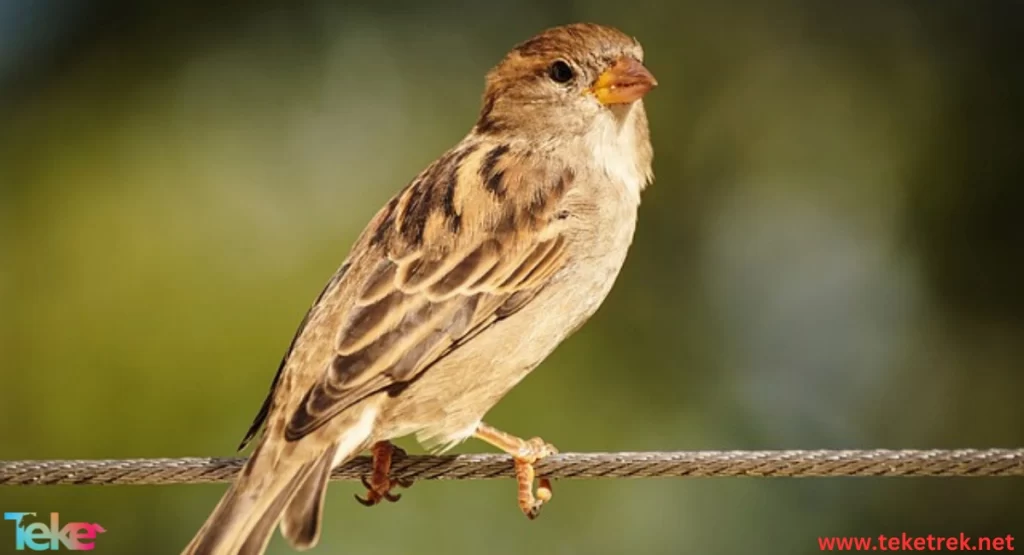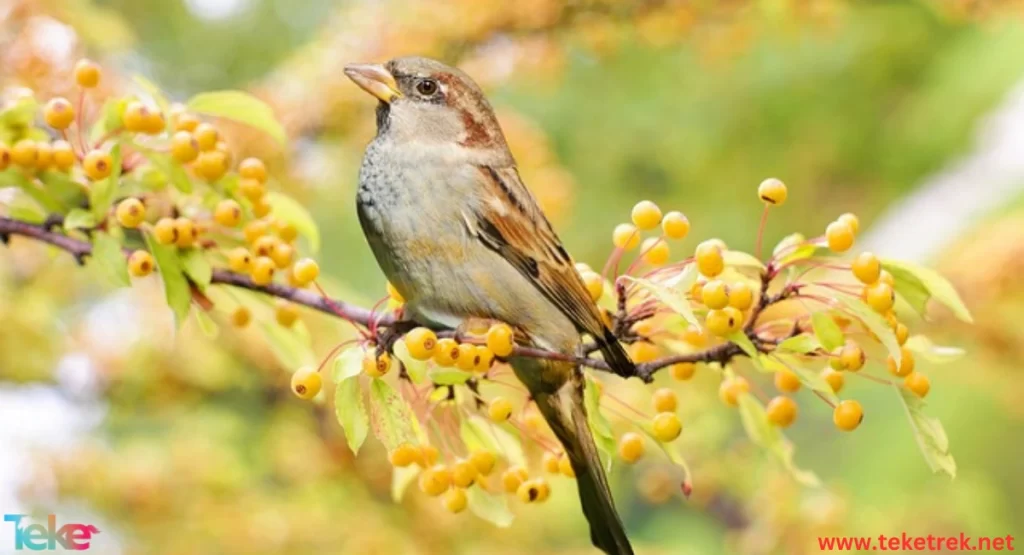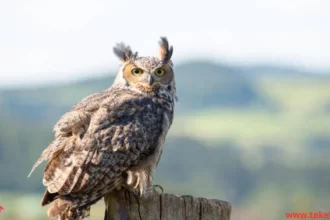Undoubtedly, you have noticed the presence of small birds flying near your house or in public gardens. These are house sparrows, or commonly known as sparrows.
These birds are among the most widespread bird species around the world. They are characterized by their proximity to human dwellings and nesting in places close to humans.
The house sparrow belongs to the Passalidae family of the Old-World sparrows.
In this article on TekeTrek, you will learn about house sparrows, their types, and their dietary habits.

External Appearance of House Sparrows
- The plumage of the house sparrow consists of various shades of brown and gray.
- Clear differences are observed between the sexes; the female is characterized by yellowish hues on the upper and lower parts, while the male has a colorful head, a reddish back, and grayish underparts.
- House sparrows have short tails and strong, short beaks, resembling other birds like finches. However, they can be distinguished by the presence of a vestigial organ, the external primary feather.
- House sparrows possess an additional bone in their tongue to grasp seeds by stiffening the tongue.
Habitats of House Sparrows
- Its native habitat is Europe, the Mediterranean basin, part of Asia and North Africa.
- House sparrows are strongly associated with human habitation and can live in urban or rural areas.
- They can be found in diverse habitats and climates across a wide range. However, they usually avoid extensive forests, meadows, and deserts away from human habitation.
Diet of House Sparrows
- House sparrows are carnivorous animals and will eat any available food.
- They primarily feed on grains, seeds, and grasses, as well as berries and fruits like grapes and cherries.
- They also usually eat insects, worms, and crustaceans wherever available, as well as earthworms and even vertebrates like lizards and frogs.
Amazing Facts About House Sparrows
- House sparrows, or Old-World sparrows, are familiar with human populations to the extent that they have become an integral part of human culture.
- Many species of house sparrows are found in agricultural lands, with human settlements being their primary habitat.
- Seventeen out of twenty-six recognized species of sparrows in the World Bird List are known to inhabit, nest, and feed around buildings.
- Grain-eating species of house sparrows, such as domestic sparrows and Sudan golden sparrows, are significant for agricultural practices as pest control mechanisms. They are beneficial to humans by helping control insect populations as well.
- In some cases, a decrease in sparrow populations has been found to lead to increased insect attacks.
- Culturally, they have also found a common place among humans due to their proximity and ubiquitous presence.
- In some cultures, writers have revered the house sparrow as the main subject in their literary works.
- Old World sparrows are associated with the Greek goddess Aphrodite, the goddess of love, due to their perceived lustfulness, as mentioned by later writers like Shakespeare.
Species of House Sparrows
Desert Sparrow
The desert sparrow is found in the Sahara Desert of Africa. It has adapted to nesting on sand dunes or sharing habitats with humans and nesting in mud walls.
Male desert sparrows have dark faces and beaks, while females are paler and have a sandier color.
House Sparrow
These are Old World sparrows that thrive in urban areas. While these birds originated in the Middle East, they have spread through gradual expansion and are now present in Africa, the Americas, Australia, and New Zealand.
House sparrows are the most widely distributed wild birds. Male house sparrows are characterized by dark heads and a conspicuous black spot around their beaks and under their throats. Female house sparrows are very dull, with orange-colored feathers on the upper and lower parts of their bodies.
Rock Sparrow
Rock sparrows range from North Africa to Southern Europe and across Asia. In appearance, rock sparrows closely resemble female house sparrows with their brown-orange coloration.
Deep Red Goldfinch
This bird is found in Tibet and the central and western regions of China. It is a small, inconspicuous bird that tends to stay in specific areas throughout the year.
These small birds are not capable of long-distance flight, so they tend to adjust their altitude in their mountainous habitat in response to stormy weather instead of avoiding it altogether.
Yellow-Spotted Jungle Sparrow
This bird is found in the savannah forests of Africa. These birds thrive in dry areas and dry grasslands, and males of this species resemble females.


FAQ
- Can budgies be kept as pets?
Yes, budgies can be kept as pets in homes, but it requires great care. They need a suitable cage allowing movement and a conducive environment. Regular provision of healthy food and clean water is necessary. Interaction, care, and affection should also be provided.
- What do budgies eat?
Budgie food includes a variety of bird seeds, whole grains, fresh fruits, vegetables, sprouts, fresh herbs, and bird-specific supplements.
- What is the lifespan of a budgie?
In natural conditions, budgies typically live from one to three years.
- Are birds intelligent?
Yes, birds exhibit some levels of intelligence, learning ability, and adaptation, although not at the same level as some mammals.
- Are budgies native to Australia?
Yes, many species of budgies are native to Australia. The continent is home to a great diversity of birds, including budgies, such as budgerigars, lorikeets, rosellas, and others.
- Do birds lay eggs?
Birds usually lay eggs during the nesting period in early spring.
- What does the house sparrow symbolize?
The sparrow indicates joy, seriousness, teamwork or self-reliance.
- What is a nickname for a house sparrow?
The house sparrow is called Hosie, row-Dow, thatch sparrow, tile sparrow, and eave sparro.
- What does the house sparrow call mean?
The house sparrow is a scientifically classified sparrow known as: Passer domestics.
In conclusion, house sparrows consume large quantities of seeds and serve as an important food source for predatory birds, domestic cats, dogs, and other animals that are found near human habitats. Humans usually appreciate these birds and consider them a part of their natural environment.






